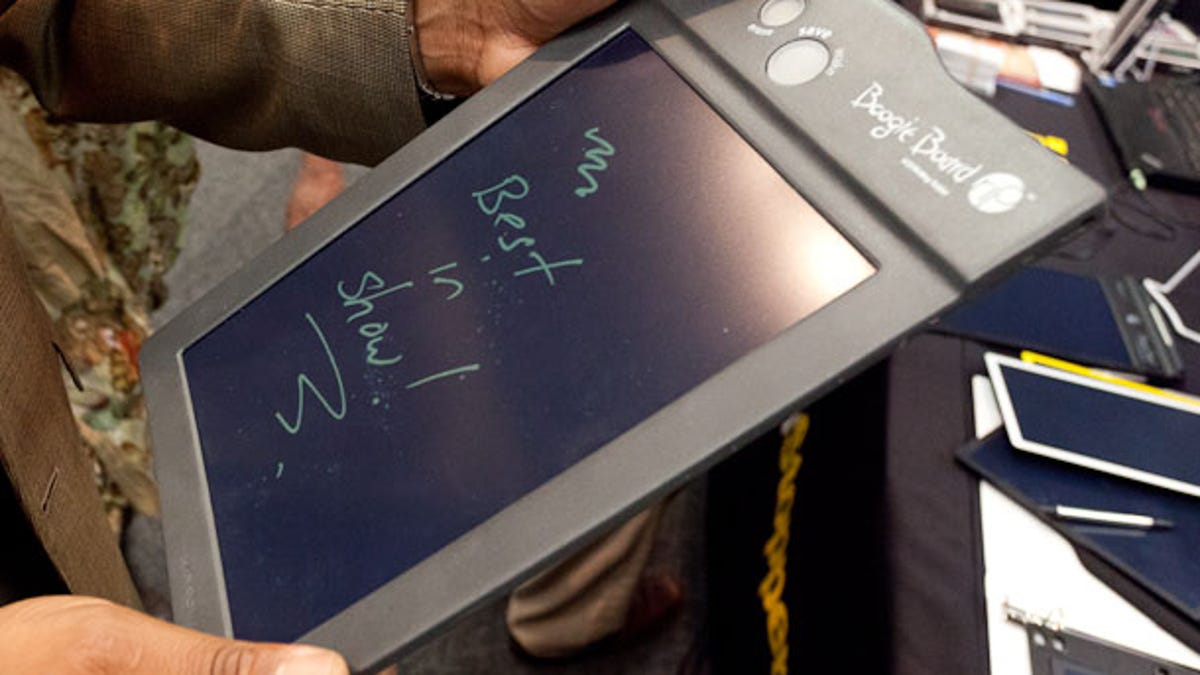Boogie Board Rip tackles e-writer market
Improv Electronics' LCD-based, low-power writer can now save notes to PDF. It will cost just over $100 when released in November.

BERLIN--E-readers are a well-established product category now, but a company called Improv Electronics believes its Boogie Board products will help establish another: e-writers.
Boogie Boards use a variety of LCD technology that lets people write using a stylus, fingertip, or anything else that exerts some pressure. It takes no power to write on the tablet; whatever you write on it shows as light colors on a dark background.
The company's first product, the $40 Boogie Board, used power only when it came time to erase what a person had written. But it only carried a single page of information, and when it was erased, it was gone forever.
But customers asked how they could save their notes, so the company debuted the Boogie Board Rip here at the IFA electronics show, Albert Green, chief executive of Kent Displays and its Improv Electronics subsidiary, said in an interview yesterday.
The new model, with a 9.5-inch screen diagonal, will cost a bit over $100 when it debuts worldwide in November, Green said. It saves notes to PDF files that can be transferred to computers by USB, he said.
The original Boogie Board used only a tiny coin-sized battery that lasts for about 50,000 erase cycles. But converting to PDF, too, requires a bit more power, so the Boogie Board Rip comes with a rechargeable battery, he said. A charge still should last a few weeks, he added.
Green thinks of the original as, essentially, a big post-it note. It could be put on the refrigerator to leave messages for family members, for example. The Boogie Board Rip, though, he sees as better for taking notes at schools and businesses when people need to keep a record.
What does the future hold for the technology? Green wouldn't say other than that there are lots of ideas. But particularly given the devices' relatively low costs and power consumption, it's not hard to imagine the devices being mounted on mobile phones, integrated with e-readers, connected live computers similar to Wacom's digital tablets, or heck, built directly into refrigerators.

